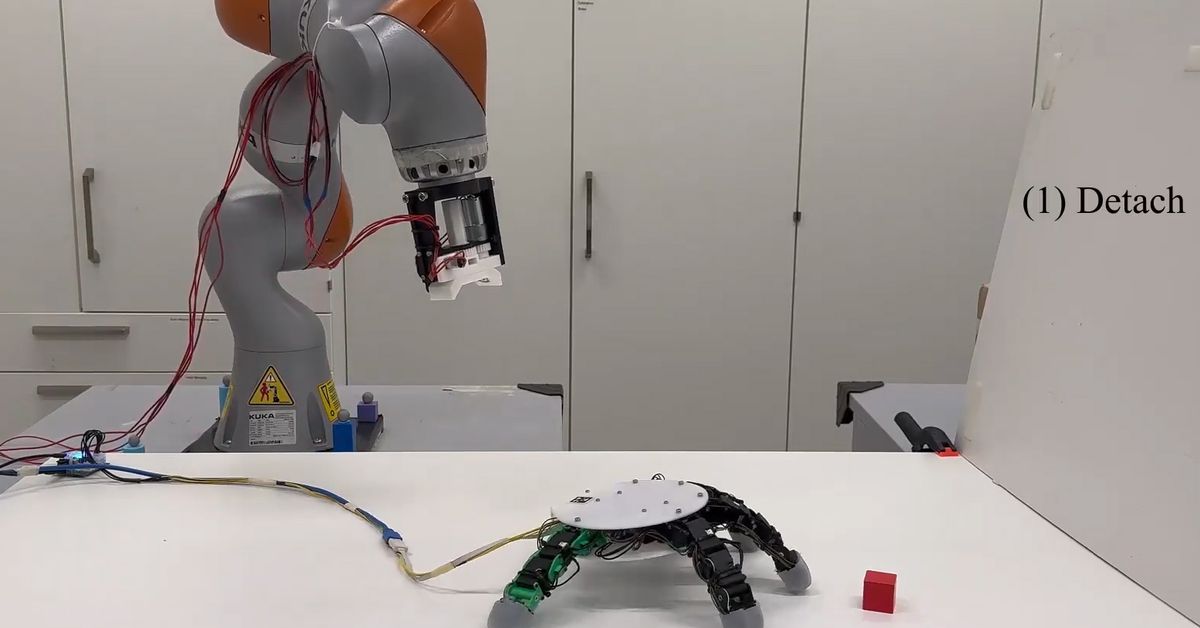Due to their strength and speed, robotic arms are typically permanently attached to floors or other structures for added stability, which limits their reach. The goal of the research, conducted at the EPFL’s Learning Algorithms and Systems Laboratory (LASA), was to develop a bimodal robotic hand with expanded grasping capabilities, including occasional independence from the robot arm it’s attached to.
Robot hands are usually designed with a single goal in mind: to hold onto things. To develop one that could do that and crawl around on its own like the Addams Family’s Thing, the researchers generated and refined a basic design using a genetic algorithm (which relies on biological tricks like natural selection and evolution) and the MuJoCo physics simulator to test the practicality of iterations.
The algorithm and simulations helped the researchers determine the optimal position and number of articulated fingers needed, which turned out to be five, in a similar layout to human hands. The robotic hand also uses a magnetic connector at the wrist, allowing it to attach and detach from an arm autonomously.
The hand’s fingers can bend in both directions, allowing it to use some of them to lift objects while the rest function as tiny legs. This design also expands the usefulness of the hand while it’s attached to a robot arm. It can lift multiple objects at once without twisting the arm around to reposition unused fingers.
The hand is also considerably smaller than robots like Boston Dynamics’ Spot, which can freely locomote using four legs. Spot has already been upgraded with its own robot arm and grasper, but with an articulated hand that operates independently, it could be better equipped to explore or analyze areas Spot can’t squeeze into.
Read the full article here














